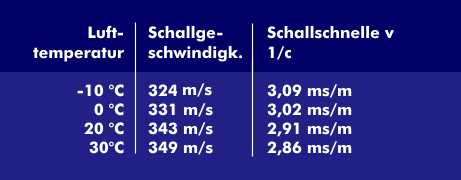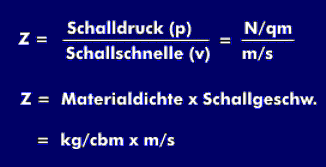sound particle velocity (v)
The sound velocity (v) is the alternating speed with which the air molecules in the sound field oscillate around their rest position. It depends on the sound frequency and the sound level and is defined as the sound deflection per unit of time in m/s.
The speed of sound is inversely proportional to the speed of sound: 1/speed of sound. The speed of sound increases with temperature, which means that the speed of sound decreases with temperature.
For a sinusoidal sound wave, the speed of sound has its highest value at the zero crossing because the excited particles change most rapidly at this time. Towards the maximum and minimum of the sinusoidal signal, the sound velocity decreases to zero.
For a plane sound wave, as it propagates in the far field, the sound pressure and the sound velocity are in phase, the sound velocity is proportional to the sound pressure and correlates with the sound frequency. In the near field of the sound source, both quantities are out of phase. In the case of a spherical sound wave, the sound pressure precedes the sound velocity by 90°. In this case, the sound velocity corresponds to the cosine of the sound pressure.
Insound reinforcement, the term membrane velocity is also known. This is the membrane excursion, which is calculated from the coefficient of the frequency. The diaphragm excursion stands for the diaphragm stroke.


